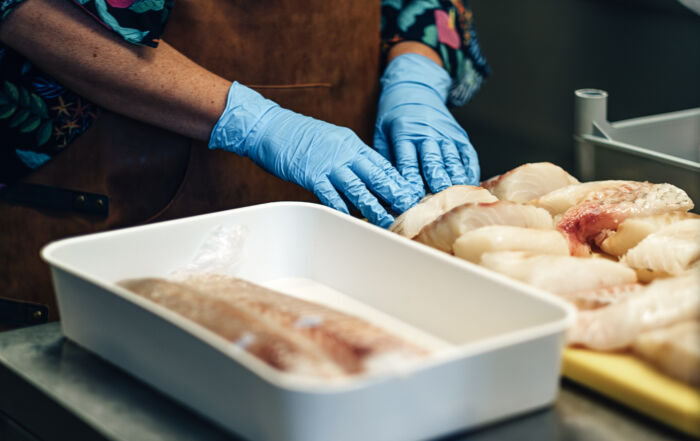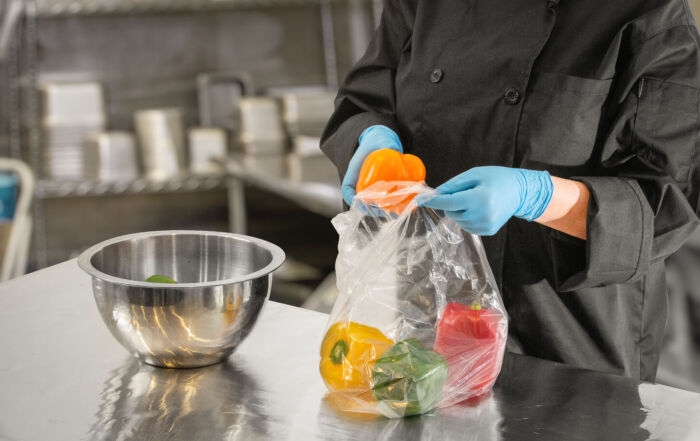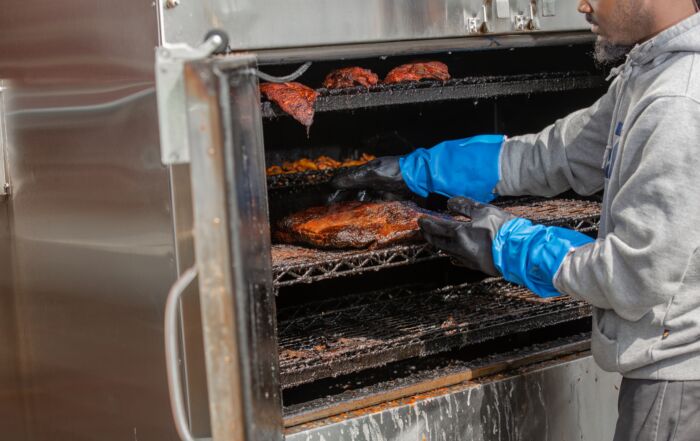Food Safety Considerations for the “New Way” of Dining
Spring is my favorite time of year, as we head out of the winter months, welcome warmer weather, and increase the daylight hours. As such, we turnover a new leaf and welcome new life as our grass, trees, and perennials come out of dormancy. This year as the Coronavirus vaccine continues its roll out and we welcome a third vaccine onto the market this morning, perhaps this spring we are turning over a ‘new leaf’ in a much more profound way, as we see light at the end of the Coronavirus tunnel.
If you work in a school, restaurant, or other on-site foodservice operation, much of your last year has been figuring out ways to serve your customer through carry-out, curbside delivery, or via at-home delivery and making difficult decisions that impact your livelihood, employees, and communities. In the last month, we’ve noticed consumers slowly heading back into restaurants and more and more schools once again starting to serve in-school lunch, although both look different than they did prior to early-March 2020. We will no doubt see the number of consumers heading out to dine increase as Congress eyes a third stimulus package. Both previous stimulus packages spiked same-store sales for many operations across the country.
As we all know, the landscape has changed and what it will look like once the country reaches heard immunity and we return to normal way of life has yet to be seen. What we do know is that when consumers do return, they will have a heightened set of expectations for cleanliness and safety. It is important to consider this for both your front-of-house and back-of-house staff, so in the blogs for this month, we will dive into these a bit deeper, focusing on front-of-house considerations for the first blog of the month and digging into back-of-house considerations for the second blog.
Over the last several months, we’ve noted several times on these blogs the importance of considering what changes in dining will take place because of the pandemic. If you and your management team have not yet considered this, now is the time! Because many operators are bringing on new staff or bringing back front-of-house staff who were laid off, review how your business will operate when customers come back in full-force.
Remember that perception is reality. The practices you utilize when you reopen should be more about your guests’ perception than your own.
In my local community, as of today, they have lifted limits on mass gatherings and the early-closing requirements on bars and restaurants, although face masks are still required. But, what do customers expect? I can tell you from a customer’s point of view that I have close friends who are not ready to tolerate an environment where social distancing is not practiced and masks are not used. It is important to give this some thought now, so the first Friday evening where you have a waiting list for a table you are not left scrambling for answers when customers raise a concern. Some points to consider:
- Waiting Time and Space. Although we are heading for brighter days, for the foreseeable future, I don’t think customers will appreciate the crowded waiting areas we were accustomed to prior to the pandemic. Is your operation equipped to handle call ahead seating? Will your point of sale system support SMS text applications so you could invite the guest to wait outside or even in their car and text them when their table is ready? Call your point of sale customer service representative now to find out. If it is not supported, request they add this feature. If this will not be possible, explore third-party solutions and apps that may help with this, some solutions may be able to integrate into your existing point of sale system.
- Table Spacing & Use of Plexiglass. Are your hosts/hostesses aware of your plans when restrictions are lifted and how you plan to separate (or not) guests? Once you start to use each and every table, will plexiglass help provide an added layer of perceived protection for your guests? Be sure to assign responsibility for cleaning the added plexiglass to ensure it does not become unsightly. I have been in too many retail locations in the last few weeks who seem to have forgotten to clean the plexiglass – don’t let it become a hazard to your guests.
- Menus. Will you continue to use single-use menus as we continue into summer and fall? A comparison between the cost of single-use menus and the chemicals required for disinfecting menus may be pertinent. If you opt for disinfecting menus between use, be sure your menus are in a cover that can withstand multiple disinfections with the chemical and train your staff on the proper use of the chemical, including contact time necessary to ensure disinfection.
- Mask Use. Even in those locations where restrictions are starting to lessen, most are still requiring mask use. But, when those are lifted, will you require your front-of-house staff to wear masks into the fall? Not only could it protect your guest from your staff, it can also help protect your staff from each other. Further, will the continued wearing of masks be the competitive advantage you have over your competitor? In other words, will the use of masks among your staff provide a level of comfort to your customers that make them choose your business over the competitor?
- Glove Use. Many operators are requiring service staff to use gloves more so than ever before. Be sure to train them in how to use gloves properly! Just as in general food safety and the training we have conducted with our kitchen staff for years, front-of-house staff need to know when they should change their gloves and use them responsibly. Remember, gloves are to be used along with handwashing, not instead of.
- Sanitizing and General Cleanliness. Remember your customer is more aware of general cleanliness and sanitizing practices than they have ever been. Be sure your staff are mindful of these practices as they clean and reset tables, especially when all the guests nearby are watching. Be sure they wipe down any ketchup/mustard bottles and salt/pepper shakers, regardless if they are left on the table or brought only upon request. Ensure a separate rag is utilized to clean the seating area. You’ve likely started these procedures during the pandemic, but ensure your staff stick with it, your guests will be watching.
When you are thinking about these, remember that perception is reality. This should be more about your guests’ perception than your own. Our second SafeBites Webinar of 2021 leads right into this discussion. So be sure to join us on March 17 at 1:00 pm for “Risk Communications in a Pandemic when Trust Matters More than Science”. It will be presented by Dr. Jason Ellis, a communication and food safety expert at Kansas State University.
Just as we wouldn’t implement a practice that makes any guests feel unwelcome, implementing practices that make them feel safe when returning to your establishment is paramount in a post-pandemic world. Whatever you decide, once you and your management team have thought through your front-of-house operations, be sure to train your staff and follow-up on these practices. Thinking through all of these will help protect your guests’ health, protect the health of your staff, and protect the health of you and your business. Risk Nothing!
READ MORE POSTS
Preventing Norovirus in your Foodservice Operation
Norovirus is one of the leading causes of vomiting and diarrhea in the United States, [...]
Safe Handling of Leftovers in Foodservice Operations
In any foodservice operation, leftovers are inevitable. After managing a family-style restaurant, where all-you-can eat [...]
Turn your Health Inspector into your Food Safety Ally
For many foodservice operators, keeping up with evolving regulations can feel like chasing a moving [...]
Time and Temperature: Why 41°F to 135°F?
In one of my last blogs, I mentioned the temperature danger zone, or TDZ, as [...]










